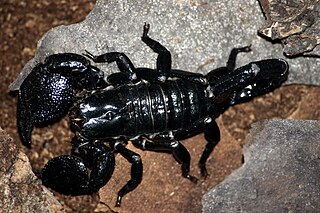
Jungermanniaceae is the namesake family of leafy liverworts. It is a group of small plants that are widely distributed. Several genera formerly included within the family are now classified in the Myliaceae or Solenostomataceae.

The Philippine Olympic Committee Inc. (POC) is the National Olympic Committee of the Philippines.
Iwal is an Austronesian language spoken by about 1,900 people from nine villages in Morobe Province, Papua New Guinea. Although it appears most closely related to the South Huon Gulf languages, it is the most conservative member of its subgroup.

Aneuraceae is a family of thallose liverworts in the order Metzgeriales. Most species are very small with narrow, branching thalli.
Haesselia is a genus of liverworts in the family Cephaloziaceae. It contains the following species :
Myriocoleopsis fluviatilis is a species of liverworts in the family Lejeuneaceae. It is endemic to Brazil. Its natural habitat is rivers. It is threatened by habitat loss.
Cryptothallus is a previously recognized genus of liverworts in the family Aneuraceae. The plants are small, and are white to pale green as a result of lacking chlorophyll. This feature led to the creation of a separate genus. The morphology of species assigned to Cryptothallus is very similar to that of Aneura. As a result, Karen Renzaglia in 1982 suggested that the only species then placed in the genus, Cryptothallus mirabilis, may be considered "merely as an achlorophyllous species of Aneura." Wickett and Goffinet argued the same position on the basis of sequences of nuclear, mitochondrial, and plastid DNA, and moved Cryptothallus mirabilis to Aneura. A 2010 molecular phylogenetic study confirmed the position of Cryptothallus within Aneura. This was accepted in the 2016 world checklist of hornworts and liverworts.

Pleurozia is the only genus of liverworts in the family Pleuroziaceae, which is now classified in its own order Pleuroziales, but was previously included in a broader circumscription of the Jungermanniales. The genus includes twelve species, and as a whole is both physically distinctive and widely distributed.

Solenostomataceae is a family of liverworts in the order Jungermanniales.

Lophoziaceae is a family of liverworts belonging to the order Jungermanniales.

Pandinus is a genus of large scorpions belonging to the family Scorpionidae. It contains one of the most popular pet scorpions, the emperor scorpion . The genus is distributed across tropical Africa.

Gymnomitriaceae is a liverwort family in the order Jungermanniales.

Cephaloziaceae is a family of liverworts.

Poc chuc is a Mexican dish of meat, commonly pork, that is prepared in citrus marinade and cooked over a grill. Poc chuc is often served with a side of rice, pickled onion, refried beans, and avocado. Poc chuc is one of the signature dishes of the Yucatán.

Calypogeiaceae is a family of liverworts. This type of plant is a calcifuge.

Aneura is a genus of liverworts in the family Aneuraceae.
Anastrophyllaceae is a family of liverworts belonging to the order Jungermanniales.

Cephaloziellaceae is a family of liverworts belonging to the order Jungermanniales.

Tamás Pócs is a Széchenyi Prize-winning Hungarian botanist, ecologist, and college professor, and member of the Hungarian Academy of Sciences. His research interests include the taxonomy and distribution conditions of mosses, tropical ecology, and the flora of Southwestern Transdanubia and the Southern Carpathians. His name is associated with the collection of many plant specimens and the description of one hundred and forty new plant species. Between 1991 and 1995 he was the president of the Hungarian Biological Society. His great-grandfather Ferenc Kozma (1844–1920) was a teacher, publicist and academic; his sister Éva Pócs is a folklore researcher.














